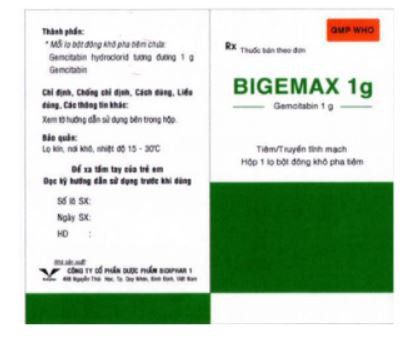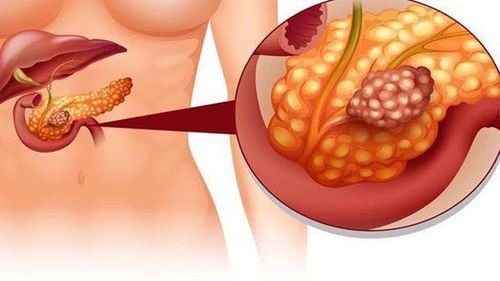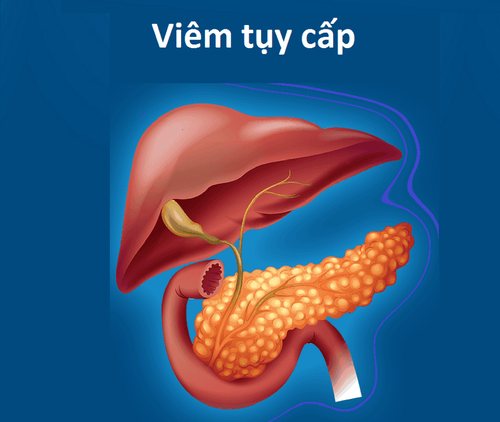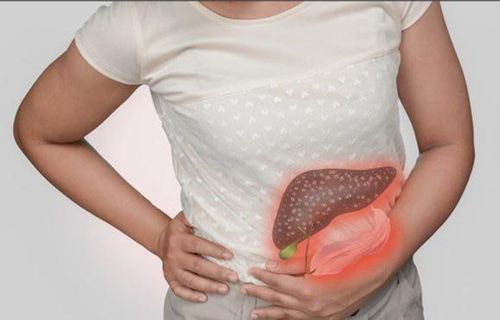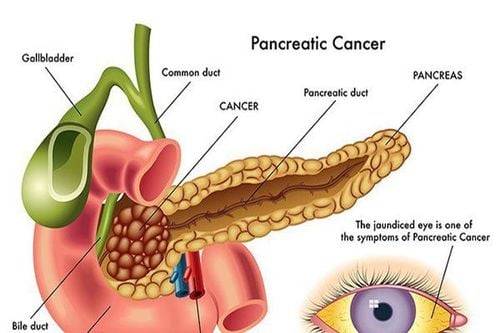This is an automatically translated article.
The article is professionally consulted by Specialist Doctor I Dong Xuan Ha - Department of Medical Examination and Internal Medicine - Vinmec Ha Long International Hospital.
Acute pancreatitis is an acute gastrointestinal disease with a poor prognosis. For severe cases of acute pancreatitis, the progression is often rapid, with a high risk of life-threatening. Therefore, early recognition of signs of severe acute pancreatitis helps to guide early diagnosis, timely intervention, and improve prognosis.
Signs of severe acute pancreatitis are described below:
1. Abdominal pain
Abdominal pain is the presenting symptom in almost all cases of acute pancreatitis irrespective of the causative mechanism. Abdominal pain is caused by damage to the pancreas, pancreatic enzymes escape into the peritoneum, causing peritonitis.Although abdominal pain in acute pancreatitis is unlikely to help rule out other diagnoses, a "typical" abdominal pain can help guide this pathology.
Accordingly, the patient will report acute onset of abdominal pain after eating a full meal (eg a large feast) and this is the peak of the need for digestive enzymes. The amount of digestive enzymes is massively secreted while the pancreatic parenchyma is inflamed, causing the pain intensity to increase rapidly in minutes or hours. The pain is usually localized to the epigastrium, sometimes to the left. However, when the degree of inflammation progresses rapidly and is severe, pancreatic juice spreads throughout the peritoneal cavity, the patient will have abdominal pain.
The pain of severe pancreatitis is often constant and severe, causing the patient to bend by sitting with the knee flexed in front of the chest, squatting or lying on one side with the knee bent to relieve some of the pain. Any forceful movement of the chest and abdomen such as sitting up, coughing, taking a deep breath or lying on your back will also make the pain worse.
When examining the doctor, the doctor can feel the abdomen to know the extent of pancreatitis. Severe acute pancreatitis will cause the patient's abdomen to tighten, with signs of resistance or contraction of the abdominal wall muscles, while if it is milder, it only causes a feeling of tightness.
In these situations, close monitoring is necessary to detect peritonitis as well as other complications of severe acute pancreatitis. In addition, if hemorrhagic pancreatitis is severe, bruises will be observed in the subcutaneous tissue around the navel or in the left flank and back ribs.
2. Nausea – vomiting

Therefore, the patient is stimulated with nausea and has to vomit continuously. At first, the vomit is old food, but then it is only gastric secretions or bile. Unlike other digestive diseases, vomiting still does not make the patient any less painful.
In addition, the more severe the pancreatitis will stimulate the patient to vomit more. The volume of fluid and electrolytes lost through the vomiting reflex accelerates the deterioration of the condition. Even if vomiting blood is an indicator of acute hemorrhagic pancreatitis, the prognosis is dire.
3. Fever
Fever is one of the manifestations of systemic inflammatory response. This is also a sign of a poor prognosis. Sometimes the fever is caused by an infection in the abdomen. The agent is intestinal gram-negative bacteria, so it is highly toxic, patients with malaria have intermittent tremors, infection - severe intoxication.4. Low blood pressure
When acute pancreatitis is severe with systemic complications, it manifests as multi-organ failure. In particular, hypotension is evidence of damage to the cardiovascular system.Circulatory fluid loss both through vomiting and vasodilatation and increased vascular permeability in the systemic inflammatory response puts the effective circulating volume at risk. On the other hand, the toxicity of chemical mediators also inhibits the heart's ability to contract, and the drop in blood pressure becomes cumulative. Accordingly, if not quickly enough fluid resuscitation, early vasopressor use, the patient's life will be in danger.

5. Respiratory failure
Activation of the systemic inflammatory response causes vasodilation, increased vascular permeability in the pulmonary capillaries, and increased gas exchange membrane thickness, making the respiratory process ineffective.Not only that, the patient is lying stiff, limiting deep breathing due to abdominal pain will further reduce ventilation. The amount of oxygen in the blood decreases, the patient becomes cyanotic, labored breathing, lethargic and comatose.
6. Disturbance of perception
In the case of severe acute pancreatitis, the functioning of the organs is damaged, the metabolic processes are wrong, causing the accumulation of more toxins in the blood. At the same time, the state of low blood pressure causing lack of blood perfusion to the brain, respiratory failure leading to lack of oxygen to the brain will also inhibit the activity of brain cells. The patient is lethargic, drowsy, sluggish, and unconscious.7. Other symptoms
Symptoms of severe acute pancreatitis will manifest more clearly when complications occur. Specifically, patients with little urine, generalized edema, arrhythmia, cardiac arrest when there is increased toxicity in the blood due to acute renal failure.If pseudocysts form in the pancreas, collecting fluid, inflammation creates abscesses, compression, the patient will have abdominal pain, high fever continuously and for a long time. In the case of pancreatitis due to biliary obstruction, the prominent symptom will be jaundice. Besides, the process of coagulation - hemostasis is also disturbed, the patient has both bleeding in this place due to damage to the vessel wall, and it is easy to form thrombus, causing thrombosis elsewhere.
In addition, severe acute pancreatitis is also considered an acute onset event of medical comorbidities despite being well controlled, such as coronary artery disease, chronic heart failure, chronic lung disease, chronic renal failure ... At this time, the patient is not only affected by complications of acute pancreatitis but also affected by acute exacerbations of medical diseases. The progression of the disease becomes more severe, the treatment problem will be more difficult.
In summary, severe acute pancreatitis has very severe symptoms at the outset. If not detected and well controlled, these symptoms will progress faster and more severely, affecting the patient's life.
With 14 years of experience in the field of Endoscopy - Gastroenterology, Doctor Dong Xuan Ha proficiently performs diagnostic gastrointestinal endoscopy techniques, emergency interventions and therapeutic interventions. Currently, he is a gastroenterologist at the Department of General Internal Medicine, Vinmec Ha Long International General Hospital.
Please dial HOTLINE for more information or register for an appointment HERE. Download MyVinmec app to make appointments faster and to manage your bookings easily.





